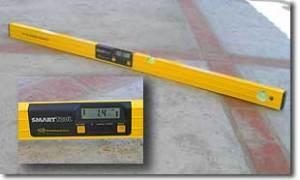Tools of the trade

You'll want to follow the articles in succession, starting with Intro to the F.I.S.T. Method:
1. F.I.S.T. axioms
2. F.I.S.T. protocol
3. Measuring conventions
4. Seat height
5. Cockpit length
6. Hip angle
7. Armrest drop
8. Tools of the trade <– You are here
9. Your bike's "waistline"
10. Translating fit specs to bike specs
If you're reading in succession, you should've read our article on Armrest drop prior to this. Our series begins here.
I do a lot of construction on the Slowtwitch Ranch (aka Xantusia), it's more or less my hobby. On any given day it's framing, masonry, laying tile, plastering, roofing, landscaping, electrical, plumbing, or finishing concrete. One thing is true of all these endeavors: the job is made a lot harder if you don't have the proper tools.

It's the same when I work on bikes. I'm sure it's the same with the stuff I'm pretty bad at, like working on cars, or electronics. Likewise, while it's not impossible to execute a proper tri bike fit without the best tools, but it's a bit harder, and it can take a lot more time.
Here is a list of the tools I use, and while others might find the need for tools not listed below, I can do everything I need with the tools I'll present below.
First and most important is the fit bike, or position simulator. There are perhaps eight of these in current manufacture that I know of, and you might lump them into two groups: those made to generate angular dimensions, and those that allow you to generate a set of X/Y measures. Two in that latter category are Serotta's Size Cycle, and the Kobila made by Ves Mandaric (also the maker of Yaqui bikes).
I use Exit Cycling's Kobila (the head pin is pictured at the top of this article, Mandaric is pictured with his contraption just above, and the Kobila's etched elevation-measuring piston is below left), with laser-etched plates and pistons, and while these bikes are on the pricey side they represent the apex of what I need as one who fits triathletes to their bikes.

The Kobila does four things I like. First, it gives me a precise set of vertical and horizontal dimensions without having to apply a second external tool to the bike. In other words, after I've positioned the rider, I'll know how high, and how far in front, of the bottom bracket the aerobars lie, and the same X/Y relationship between the saddle nose and the BB.
Second, the saddle pitch or tilt remains the same throughout the range of fore/aft positioning. Third, I can lower the aero bars, and the saddle, while the athlete pedaling the bike. Fourth, it's got an angular head tube simulator on an otherwise X/Y bike (a fuller explanation of the utility of this is here.)
While the Kobila is my favorite fit bike for tri bike use, I have another bike made by Waterford Cycles that is a great all-around bike (road race and tri), and it's a lot less money. It comes ready to mount a Computrainer as your load generator if that's what you'd prefer (I do), and it's quite rangy — I can fit very short and very tall people on this bike. But I've got to apply an external X/Y tool to get the metrics I'm looking for, and it's not got an angular head pin on an X/Y system.

I use a SmartTool as my digital angle finder. You can get these as stand-alone units or built into a level. I prefer the latter, specifically the 48" version. Yes, if I'm really interested in looking at everything on the basis of vertical and horizontal measures, the angular measures are not necessary.
Just the same, it's helpful to express someone's saddle position as an angle relative to the bottom bracket, because it makes it easier to tell which production bikes are made that conform most closely to the subject's optimized fit.
You hold the level so that its surface passes through the BB and the center of the saddle's rails and, voila, seat angle. A 48" Smarttool will cost between $120 and $160, depending on your luck and skill at shopping.

I discovered the Gollehon Goniometer online, and found it the easiest of all goniometers that I've used. The dial indicator is large and easy to read, and the telescoping arms make it easy to take the measure of hip and shoulder angles. Most other goniometers have arms that are not sufficiently long, so you have to visually extrapolate out to the knee, bottom bracket, shoulder. These cost around $60 at present.
There are two metal rules I use, one short and one long. My favorite short rule is only 15cm in length, and I use it to measure armrest drop. The longer one is a meter in length, and I use this to measure saddle height, cockpit length, and so forth. Yes, you can use tape measures instead, but the metal rule is just easier.
While I can use my Smarttool for measuring armrest drop, I favor a shorter carpenter's level for this, just because it's less cumbersome. You don't need a level more than 24" long for this exercise.






Start the discussion at forum.slowtwitch.com